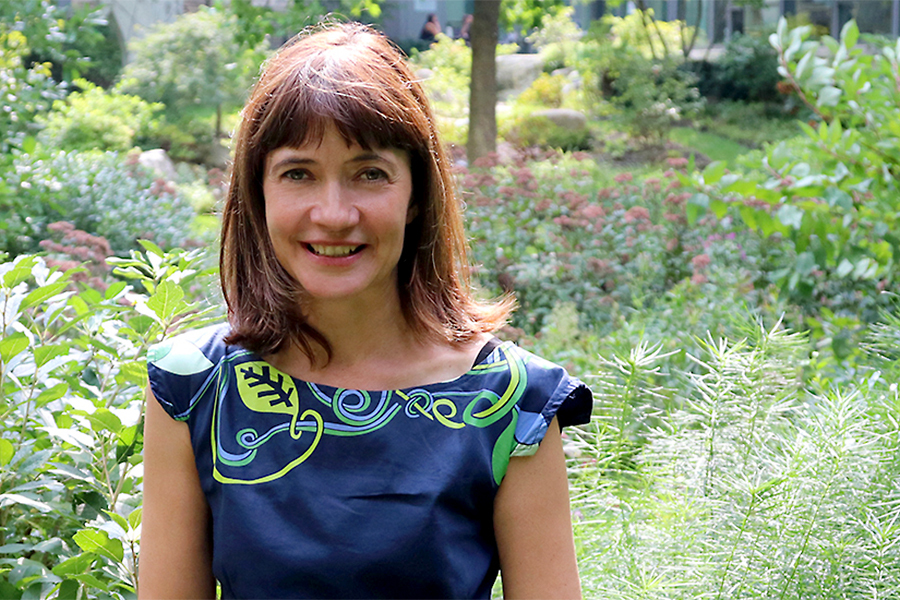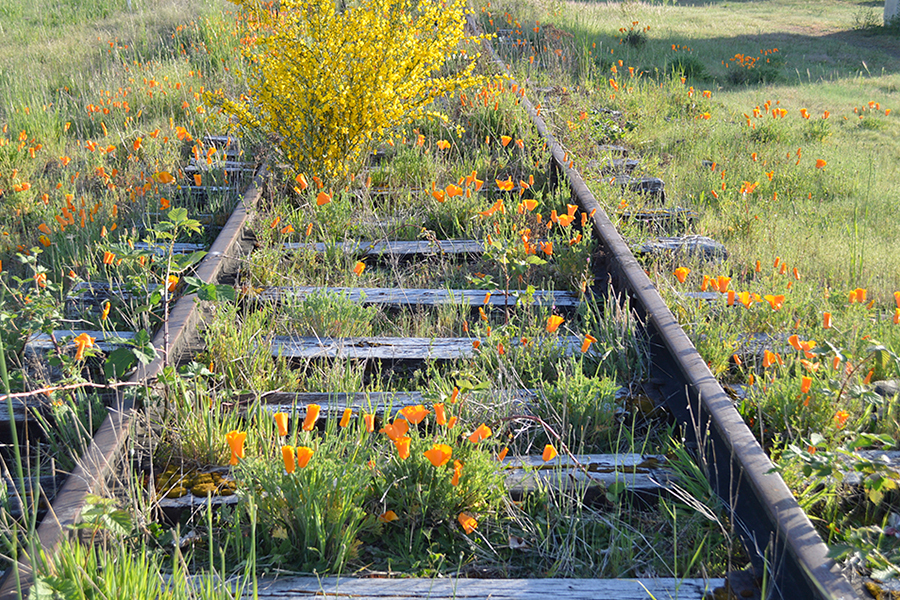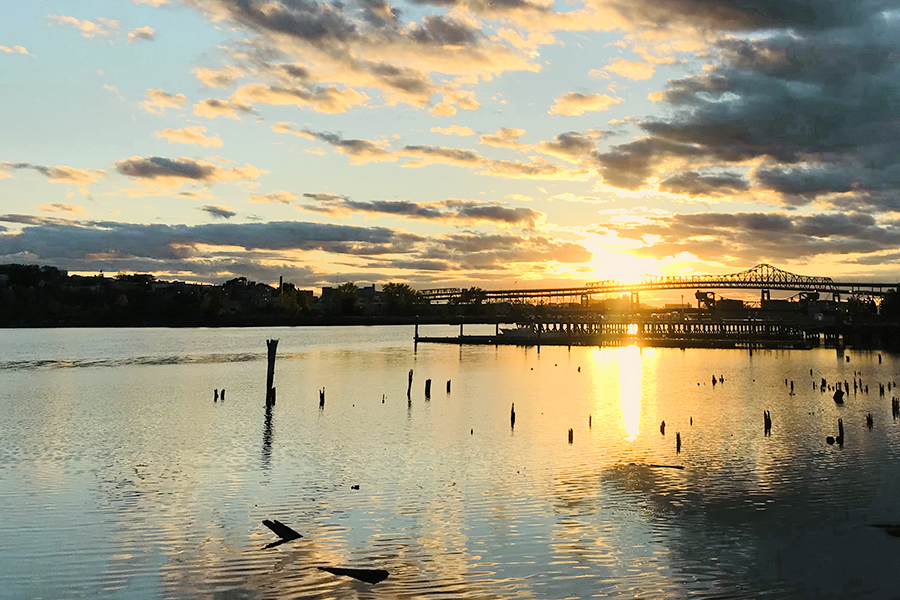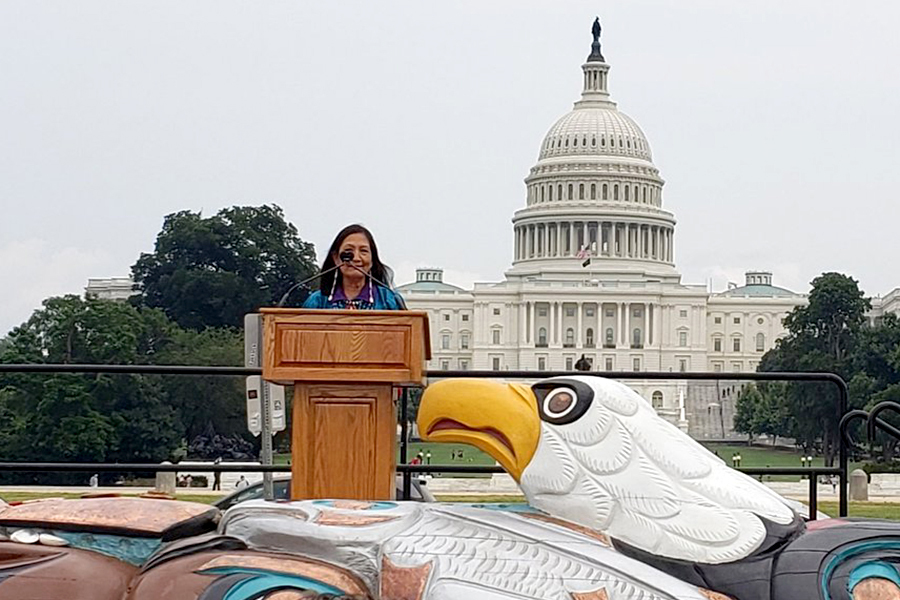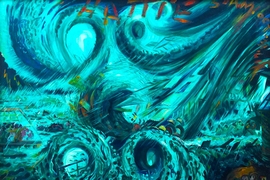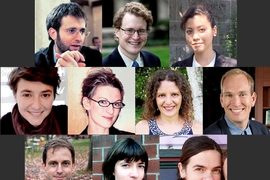In an ongoing series, MIT faculty, students, and alumni in the humanistic fields share perspectives that are significant for solving the economic, political, ethical, and cultural dimensions of climate change, as well as mitigating its myriad social and ecological impacts. Bettina Stoetzer is the Class of 1948 Career Development Associate Professor of Anthropology at MIT; her research combines perspectives on ecology and environmental change with an analysis of migration, race, and social justice. In this conversation with SHASS Communications, she shares insights from anthropology and from her forthcoming book, "Ruderal City: Ecologies of Migration and Urban Life in Berlin" (Duke University Press, 2022).
Q: You research “ruderal” ecologies — those rising up like weeds in inhospitable locales such as industrial zones. What does your work reveal about the relationship between humans and the environment, particularly as climate change presents ever more challenges to human habitation?
A: The term ruderal originates from the Latin word "rudus," meaning "rubble." In urban ecology it refers to organisms that spontaneously inhabit inhospitable environments such as rubble spaces, the cracks in sidewalks, or spaces alongside train tracks and roads. As an anthropologist, I find the ruderal to be a useful lens for examining this historical moment when environmental degradation, war, forced migration, economic inequality, and rising nationalism render much of the world inhospitable to so many beings.
My book, "Ruderal City: Ecologies of Migration and Urban Life in Berlin," is inspired by the insights of botany, ecology, as well as by social justice struggles. During my fieldwork in Berlin, I engaged with diverse communities — botanists, environmentalists, public officials, and other Berlin residents, such as white German nature enthusiasts, Turkish migrants who cultivate city gardens, and East African refugees who live in the forested edges of the city.
The botanists I spoke with researched so-called “ruderal flora” that flourished in the city’s bombed landscapes after the end of World War II. Berlin’s rubble vegetation was abundant with plants that usually grow in much warmer climate zones, and the botanists realized that many of these plants’ seeds had arrived in the city by chance — hitching a ride via imported materials and vehicles, or the boots of refugees. At the same time, the initial appearance of these plants illustrated that Berlin had become hotter, which shed light on the early signs of climate change.
But that is only part of the story. Listening to migrants, refugees, and other Berlin residents during my fieldwork, I also learned that it is important to consider the ways in which people who are often not recognized as experts relate to urban lands. White European environmental discourse often frames migrants and communities of color as having an inappropriate relation to “nature” in the city, and racializes them on that basis. For example, Turkish migrants who barbecue in Berlin’s parks are often portrayed as polluting the “green lungs” of Berlin.
Yet from working with these communities, as well as with other Berliners who cultivated urban vegetable gardens, built makeshift shelters in abandoned lots, produced informal food economies in Berlin’s parks, or told stories about their experience in the forest edges of the city, I learned that people, while grappling with experiences of racism, actually carved out alternative ways of relating to urban lands that challenged white European and capitalist traditions.
Engaging with these practices, I utilize the concept of the ruderal and expand it as an analytic for tracking seemingly disparate worlds — and for attending to the heterogeneous ways in which people build lives out of the ruins of European nationalism and capitalism. My goal in the book is not to equate people with plants, but rather to ask how people, plants, animals, and other living beings are intertwined in projects of capitalist extraction and in nation-making — and how they challenge and rework these projects.
Q: In what ways do you think the tools and insights from anthropology can advance efforts to address climate change and its impacts?
A: When tackling complex environmental challenges, climate change included, the focus is often on “the social consequences of” climate change and technological solutions to address it. What is exciting about anthropology is that it gives us tools to interrogate environmental challenges through a broader lens.
Anthropologists use in-depth fieldwork to examine how people make sense of and relate to the world. Ethnographic fieldwork can help us examine how climate change affects people in their everyday lives, and it can reveal how different stakeholders approach environmental challenges. By providing a deeper understanding of the ways in which people relate to the material world, to land, and to other beings, anthropological analyses also shed light on the root causes of climate change and expand our imagination of how to live otherwise.
Through these close-up analyses, ethnography can also illuminate large-scale political phenomena. For instance, by making visible the relation between climate change denial and the erosion of democratic social structures in people's everyday lives, it can provide insights into the rise of nationalist and authoritarian movements. This is a question I explore in my new research project. (One case study in the new research focuses on the ways in which pigs, people, and viruses have co-evolved during urbanization, industrial agriculture, and the climate crisis, e.g.: the so-called African Swine Fever virus among wild boar — which proliferate in the ruins of industrial agriculture and climate changes — trigger political responses across Europe, including new border fences.)
Through several case studies, I examine how the changing mobility patterns of wildlife (due to climate change, habitat loss, and urbanization) pose challenges for tackling the climate crisis across national borders and for developing new forms of care for nonhuman lives.
Q: You teach MIT's class 21A.407 (Gender, Race, and Environmental Justice). Broadly speaking, what are goals of this class? What lessons do you hope students will carry with them into the future?
A: The key premise of this class is that the environmental challenges facing the world today cannot be adequately addressed without a deeper understanding of racial, gender, and class inequalities, as well as the legacies of colonialism. Our discussion begins with the lands on which we, at MIT, stand. We read about the colonization of New England and how it radically transformed local economies and landscapes, rearranged gender and racial relations, and led to the genocide and dispossession of Indigenous communities and their way of life.
From this foundation, the goal is to expand our ideas of what it means to talk about ecology, the “environment,” and justice. There is not one way in which humans relate to land and to nonhuman beings, or one way of (re-)producing the conditions of our livelihoods (capitalism). These relations are all shaped by history, culture, and power.
We read anthropological scholarship that explores how climate change, environmental pollution, and habitat destruction are also the consequences of modes of inhabiting the earth inherited from colonial relations to land that construct human and nonhuman beings as extractable “resources.” Considering these perspectives, it becomes clear that pressing environmental challenges can only be solved by also tackling racism and the legacies of colonialism.
Throughout the semester, we read about environmental justice struggles that seek to stop the destruction of land, undo the harm of toxic exposures, and mitigate the effects of climate change. I hope that one of the takeaways students gain from this course is that Black, Indigenous, people-of-color, and feminist activists and scholars have been leading the way in shaping more livable futures.
Q: In confronting an issue as formidable as global climate change, what gives you hope?
A: I am really inspired by youth climate justice activists, especially from the Global South, who insist on new solutions to the climate emergency that counter market-driven perspectives, address global economic inequalities, and raise awareness about climate-driven displacement. Confronting climate change will require building more democratic structures and climate justice activists are at the forefront of this.
Here at MIT, I also see a growing enthusiasm among our students to develop solutions to the climate crisis and to social injustices. I am particularly excited about Living Climate Futures, an initiative in Anthropology, History, and the Program on Science, Technology, and Society. We will be hosting a symposium at the end of April featuring environmental and climate justice leaders and youth activists from across the country. It will be a unique opportunity to explore how community leaders and research institutions such as MIT can collaborate more closely to tackle the challenges of climate change.
Interview prepared by MIT SHASS Communications
Senior writer: Kathryn O'Neill
Series editor, designer: Emily Hiestand, communications director
